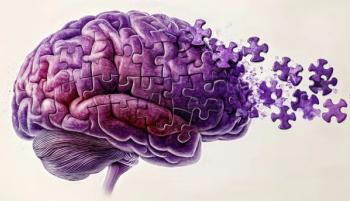
A Boost in Hope for Stroke Treatment
stroke, tissue plasminogen activator, tPA, stent, transcranial Doppler, MRI
Recent developments and recommendations could mean that better treatment and improvements in procedures are on the way for people who arrive in emergency rooms (ERs) in the midst of a stroke. Under the new Medicare prescription drug plan, hospitals soon will be getting higher reimbursements for emergency stroke treatments. Boston Scientific Corp. has received FDA approval to market a stent that doctors can use to open up clogged arteries. The journal Neurology has published recommendations to use simple standardized forms to ensure that more patients get the best treatment possible.1
Each year, 700,000 to 800,000 people in the United States will suffer a stroke. Some will not reach the hospital in time to receive treatment to prevent serious brain damage. Others will get there in time but will not be treated with the best drugs for the condition or follow a specific stroke treatment protocol. Some will suffer from small cortical strokes, but they may not be treated effectively to prevent future, more extensive strokes.
But some of this may be about to change. Tissue plasminogen activator (tPA), Genentech's clot-buster drug, has been on the market since 1996. A biotechnology-produced thrombolytic agent, which breaks down blood clots that cause ischemic stroke--stroke resulting from a clot released into the brain's blood vessels or from narrowing of the vessels by plaque deposits--tPA is not used all that frequently to prevent further damage. There are several reasons: the drug is expensive; in the hands of a physician inexperienced with its use, the drug can be dangerous; and in some cases, the hospital may lack a protocol for stroke treatment.
Part of the issue has been that Medicare reimbursed hospitals only $4000 to $6000 for care of stroke patients. The drug alone costs about $2000 per dose. But starting in October, the Centers for Medicare & Medicaid Services (CMS) will reimburse hospitals $11,578 for treatment of ischemic stroke with a thrombolytic agent, according to the final rule published August 12 in the Federal Register.2 This figure should encourage use of tPA, because it allows the hospital some profit for treating patients with this drug and, according to critical care neurologist Colin McDonald, MD, director of stroke at South Shore Hospital in Weymouth, MA, the payment is "substantially more than tPA costs and substantially more, we believe, than it will cost the hospital for that patient's hospital stay."
Because tPA, by breaking down clots, may cause bleeding into the brain, physicians administer it infrequently in stroke patients: reportedly, it is used in only 10% of all patients who would be eligible for it, and in only 2% of all stroke patients.3 McDonald noted the risk: "Even in the best of circumstances, 6 out of 100 patients . . . will take a stroke that was due to a lack of oxygen and change it into a bleeding event." Hemorrhagic strokes, which make up the minority of all strokes, result from bleeding of a ruptured blood vessel directly into brain tissue.
McDonald has been using tPA in his patients since 1995. "At my hospital, we deliver tPA on a near-weekly basis and consider its use on a near-daily basis," he said. But, he explained, in other hospitals, "in many situations, the medicine is not even considered." Even if it were considered, "these hospitals realize they don't have the technology or staffing to deliver the medicine safely," because the patients need to be carefully monitored for side effects or serious complications from the drug.
A Genentech spokeswoman said that the company will be monitoring the use of tPA to see whether the new reimbursement scheme will increase the drug's use. But, she added, certain steps must be in place for monitoring patients who receive tPA for side effects. "What we believe is that the hospitals need to create the structure and the systems so those stroke patients that would benefit the most from tPA would receive it," she explained.
Following standardized orders
The group of clinicians and researchers who published the report in the August issue of Neurology on quality-of-care indicators in treating stroke patients1 surveyed 7 hospitals over 2 years to determine percentages of patients who received any of 6 interventions: thrombolysis; thrombolysis within 3 hours of symptom onset; antithrombotic medication given within 48 hours of arrival in the hospital; prophylaxis for deep venous thrombosis; smoking cessation counseling if indicated; and prescription of lipid-lowering and antithrombotic medications at discharge from the hospital. In the first year, the hospitals had no standardized orders for treatment of stroke victims and only 44% of the patients received all 6 treatments. In the second year, 6 of the 7 hospitals instituted standardized orders at admission and discharge of stroke patients. That year, 63% of the patients in those hospitals received all 6 treatments.
Although the mitigating factor against use of thrombolytics within the first 3 hours after symptoms appear is that, as the study found, most patients do not arrive in the ER within those first 3 hours, having such orders with a checklist may improve care. "I'm a big believer in protocols and guidelines," stated McDonald. "I was gladdened to see that document in Neurology." He noted that using standardized guidelines can mean that patients survive the first 24 hours after stroke and are moved into rehabilitation more quickly. "More importantly," said McDonald, "it's going to improve outcome and improve patient safety," because guidelines may deal with such issues as pneumonia prevention and clot prevention while the patient is hospitalized. He noted that when a hospital follows such care guidelines, the patient can feel safe in knowing that the risk of having another stroke will be reduced.
Expanding the window of tPA use
Because most patients don't reach the hospital within the 3-hour window for thrombolytic treatment, researchers are looking at ways of expanding that window. Marc Ribo, MD, PhD, and colleagues from Hospital Vall d'Hebron in Barcelona, Spain, reasoned that new imaging techniques may allow them to screen patients who are beyond the 3-hour window but who may, nevertheless, benefit from tPA administration. Ribo told AppliedNeurology that the 3-hour window "was set in the CT era. The new, improved imaging technology, such as TCD/MRI [multimodal transcranial Doppler/magnetic resonance imaging] is capable of identifying those patients who may still benefit from tPA after 3 hours from onset and to reject those who wouldn't."
The group's study, published in Stroke in March,4 determined that 77% of the 56 patients they imaged with this method, who were in the 3- to 6-hour time frame after onset of symptoms, were eligible for tPA administration. They compared the responses to tPA of these patients with those of a group of patients who were within the 3-hour postfirst symptoms time frame and treated with tPA. The 2 groups' results were similar: same approximate rate of recanalization of the occluded blood vessel 2 hours after drug administration, same approximate rate of hemorrhage, same rate of improvement at discharge, and same approximate rate of worsening. However, 76.2% of patients in the 3- to 6-hour group benefited from the treatment, compared with 58.2% of patients in the 0- to 3-hour group. Approximately the same percentages of patients were independent 3 months after treatment.
Ribo was buoyed by their findings: "Since many patients get to the ER in this time frame [3-6 hours], not using this selection criteria--or similar ones--means not giving potentially beneficial treatment to a large number of stroke patients." But, he warned, "I don't think these criteria should be generalized to every single ER; but in those centers that already have some experience with these treatments, physicians should gradually adopt new imaging techniques to safely extend the therapeutic window." He added that only physicians experienced in use of tPA could consider expanding the time frame of its use.
McDonald, however, would prefer that efforts go to educating the public that if symptoms suggest a stroke, they should get to an ER immediately. He said it is important that "the public understand that there are time-sensitive and time-critical therapies that could be life-changing. I would respectfully put more of our efforts in[to] getting patients into [the] emergency department earlier and earlier than trying to salvage the few later and later," said McDonald, who also is founder and chief medical officer of Brain Saving Technologies, a telemedicine provider in Wellesley Hills, MA.
Which patients should receive tPA treatment is still an ongoing research topic, but some basic criteria include time between symptom onset and arrival in the hospital ER, initial severity of stroke, the patient's age, and the patient's glucose levels. For a review on tPA and other treatment options, see the article "Stroke: While Current Treatment is Limited, New Options Are on the Horizon," by Marc Fisher, MD and Jurgen Bardutzky, MD, in Applied Neurology, January 2005, pages 18, 21-24.
Stenting to prevent recurrent stroke
In some cases, patients who have suffered ischemic strokes caused by atherosclerotic disease of the cerebral arteries or other arteries feeding the brain may experience future strokes, even when they're treated with anticoagulants. In some cases, such second strokes may affect the basilar artery, which serves the brain stem. The ideal way to prevent restenosis of these vessels would be by balloon angioplasty and stenting, the same procedure that is done to keep blood vessels open in the heart.
However, Kiwon Lee, MD, director of the Neurological ICU at Thomas Jefferson University in Philadelphia, said that although stents are placed in the heart and the carotid artery, "we haven't been brave enough to explore doing the same stenting technique in the brain." The reason for this, explained Lee, is that the "brain vessel [is] a little more fragile; it can rupture and that can be fatal." He noted that for patients who have had a brainstem ministroke, the only treatment--until now--was to "stay on the best therapy, stay on antiplatelet therapy/chronic warfarin therapy, and pray that the stenotic artery does not occlude and cause brain stem stroke." Lee said that about 2 basilar artery occlusions occur in every 1000 cases, and that the rate of mortality from basilar artery thrombosis/stroke is consistently more than 90%.
In early August, Boston Scientific Corp. of Natick, MA, received a Humanitarian Device Exemption approval for its Wingspan Stent System with Gateway PTA (plasma thromboplastin antecedent) Balloon Catheter. Boston Scientific's press release noted that the catheter is indicated for improving cerebral artery lumen diameter in patients with intracranial atherosclerotic disease who are unresponsive to medical therapy. "This is a breakthrough," said Lee. "I think it's a great thing that Wingspan is coming out; we can use a balloon and can also place this stent."
Preventing future strokes
The goal for patients who have suffered initial strokes is to prevent a recurrence. But even with the best knowledge and treatment today, strokes recur in some patients. A group led by coprincipal investigators Oscar Benavente, MD, and Robert G. Hart, MD, at the University of Texas Health Science Center at San Antonio, is studying treatments to lower blood pressure and prevent blood clots that can result in ischemic strokes in individuals who've already suffered a small ischemic stroke, called a small subcortical stroke. These strokes, said Benavente, make up about 25% to 30% of all ischemic strokes, and they result from small blood vessel disease.
Small subcortical strokes occur more frequently in African Americans and Hispanic Americans, explained Benavente, and have a high rate of recurrence. Hypertension and diabetes, also prevalent in minority populations, are predisposing factors. Although the initial strokes, which probably affect about 200,000 people a year in the United States, do not tend to be fatal, recurrent strokes "produce cognitive decline or memory problems, eventually vascular dementia," Benavente noted.
The researchers are carrying out a large study, called the Secondary Prevention of Small Subcortical Strokes (SPS3) study, with a total enrollment of 2500 patients, at more than 50 clinical sites in the United States and Canada, plus sites in Latin America and Spain. They are assigning patients to 2 levels of blood pressure control: less than 130 mm Hg systolic or between 130 and 149 mm Hg systolic. The patients are then maintained on either aspirin alone or aspirin and the antiplatelet drug clopidogrel (Plavix, Bristol-Myers Squibb/Sanofi). The goal of the study is to determine whether these regimens will prevent strokes from recurring. The study, based at University of Texas in San Antonio, is funded by the National Institute of Neurological Disorders and Stroke. In early August, about 700 patients had been enrolled.
The study is still enrolling patients at various sites. Physicians interested in enrolling their patients, aged 40 and older, who have had small subcortical MRI- confirmed strokes in the study should contact the group at 210-592-0404. More information is available at www.clinicaltrials.gov/ct/show/NCT00059306? order=38. *
REFERENCES
1. California Acute Stroke Pilot Registry Investigators. The impact of standardized stroke orders on adherence to best practices. Neurology. 2005;65:360-365.
2.Department of Health and Human Services. Medicare Program; Changes to the Hospital Inpatient Prospective Payment Systems and Fiscal Year 2006 rates; Final Rule. Federal Register. 2005:70:47277-47707. Available at: http://a257.g.akamaitech.net/7/257/2422/01jan20051800/edocket.access. gpo.gov/2005/05-154-6.htm. Accessed August 25, 2005.
3. Brown DL, Barsan WG, Lisabeth LD, et al. Survey of emergency physicians about recombinant tissue plasminogen activator for acute ischemic stroke. Ann Emerg Med. 2005;46:56-60.
4. Ribo M, Molina CA, Rovira A, et al. Safety and efficacy of intravenous tissue plasminogen activator stroke treatment in the 3- to 6-hour window using multimodal transcranial Doppler/MRI selection protocol. Stroke. 2005;36:602-606.
Newsletter
Receive trusted psychiatric news, expert analysis, and clinical insights — subscribe today to support your practice and your patients.

















